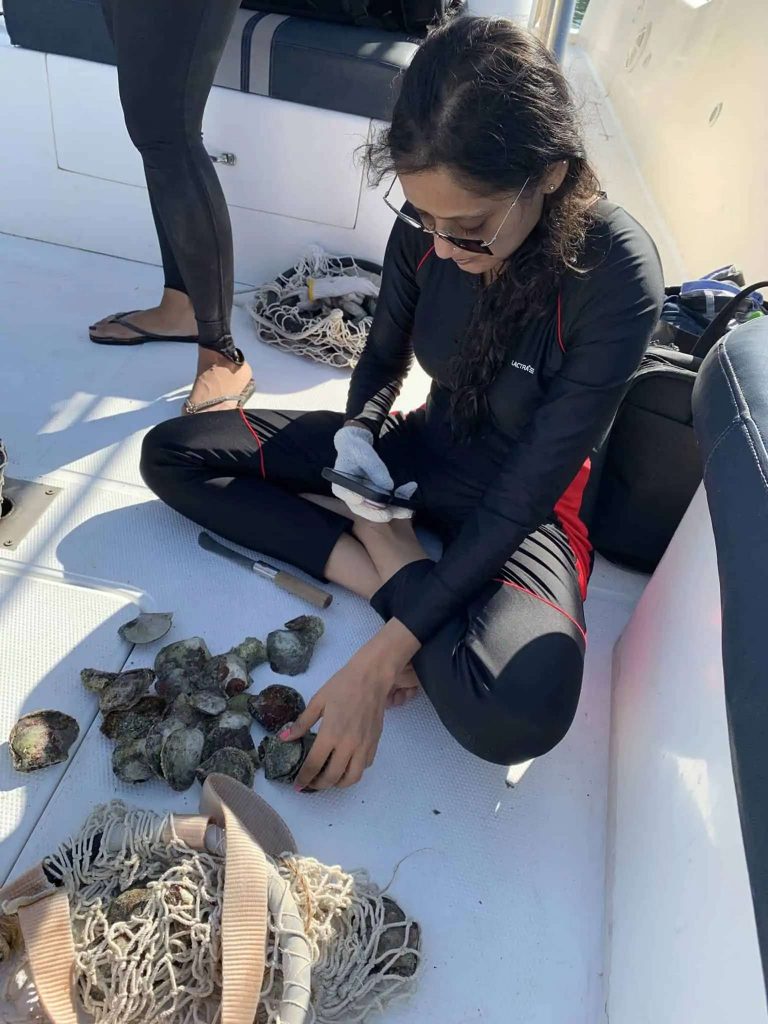BAHRAIN – Pearl divers collecting oysters from the seabed off Bahrain inspire dreams of uncovering rare and magnificent treasures of the ocean.
For centuries divers have risked their lives to hunt for natural pearls concealed in the forests of oyster beds under the sea around the islands of Bahrain.
The rarest and most remarkable pearls can garner hundreds of thousands of dollars or more.
A motorised vessel recently carried a small group of divers from the Bahrain Yacht Club outside Manama in warm and sunny weather, on a half-hour excursion to a reef where they submerged to collect oysters from the seabed.
The trip was sponsored, organised and videoed by the Bahrain Institute for Pearls and Gemstones (DANAT), which tests pearls and gemstones for clients such as jewellery manufacturers and retailers.

Tourist divers are allowed to collect up to 60 oysters each on a trip.
The Bahraini authorities and DANAT are committed to protect the ecosystem as part of a strategy to safeguard the ocean environment, diversify national economic output and revive the pearling industry.
This dive group dropped into a shallow section of water, not far from a shipwreck, and searched for oysters across a wide radius, within 100 metres of their anchored vessel for safety reasons.
The sea is crystal clear, and oysters are abundant on the seabed, with the occasional crab scuttling across the sand.
The biggest challenge was the strong ocean currents, which increased the divers’ effort to pull up the oysters from the bottom before they dropped them into the rope baskets they were carrying.
Over the centuries, divers risked blindness and deafness, from eye infections sustained in the salty sea, and as a result of descending or surfacing too quickly without equalising air pressure in their ears, Bahraini pearl historians say.
Divers used to go out in large groups on big vessels, and stay out at sea for prolonged periods.
On our trip, the boat returned to the Yacht Club marina after a half-day of diving and when moored, the group sat down onboard to start the lengthy process of “shucking” the pearls – opening the oyster and looking for any pearls inside.
Shucking is a skilled practice, involving a technique to open up the oyster with a specially crafted, blunt knife in broad daylight and then meticulously look around the flesh inside to try to find any pearl.
Shucking teaches the lesson that these natural pearls are very rare, as most oysters are cast aside with no pearl inside despite a thorough examination.
Some oysters on this trip did open up to reveal a handful of tiny white seed pearls which belonged to the diver who found them.
Such pearls have insignificant commercial value, but divers dream of finding the “Dana” pearl, an exceptional gem of enviable size, shape, colour and lustre which could command huge sums if sold to Bahraini pearl merchants.
Natural pearls, which have a premium price compared to cultured or farmed pearls due to their rarity, can come in all shapes, sizes, colours and degrees of lustre.
The most revered in the marketplace tend to be perfectly round and white – not overly white, or off white, but evenly white – while other pearls can show hues of pink or green or brown or yellow.
Merchants can spend decades gathering strings of natural pearls into a magnificent necklace as the gems are carefully graduated in size, shape, colour and lustre to create a rare and beautiful piece of jewellery that is close to artistic perfection.
https://jewelleryoutlook.com/feature-%ef%bb%bfbahraini-pearl-dive-yields-treasures-of-the-ocean/




